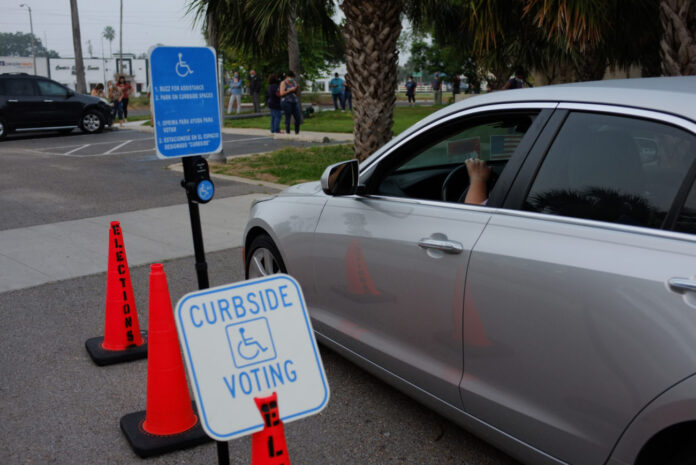Hidalgo County has already surpassed the early voting total for the 2016 general election, but only because voters have had more time to cast their ballots this year.
More than 140,000 county residents have already voted during the first 13 days of early voting, and there are still five more days left to be tallied this year because Gov. Greg Abbott extended the early voting period by six days due to the COVID-19 pandemic.
But when the first 12 days of early voting in 2020 are compared to the 12-day early voting period offered in 2016, the county appears to have lagged in voter turnout.
When specifically comparing those 12 days, there were more than 1,800 votes cast in 2016 than in 2020. Though, it’s important to note this year’s numbers are not yet official.
But perhaps the biggest difference is the increase in mail-in ballots the county has received this year. In 2016, mail-in ballots accounted for about 5% of the early votes cast during the first 12 days. In 2020, that number has doubled to nearly 10%.
Perhaps it’s to be expected given the high death toll caused by COVID-19 throughout South Texas. Hidalgo County alone has reported nearly 2,000 deaths since March, when the disease first began to appear there.
Many voters, however, are also opting to vote curbside, which is offered at all 31 early voting locations, but there’s really no way of telling just how many people have used that method, Hidalgo County Elections Administrator Yvonne Ramon said last week.
Texas does not require counties to keep track of those figures and voting machines in Hidalgo County are interchangeable, Ramon said. They can be used inside the polling location, or be taken out for curbside voting on any particular day, depending on the demand at the voting site.
“We’re supposed to use the machines in the best way possible,” Ramon said. “And so, if it’s slow curbside, then they (the clerks) will go ahead and take some of those machines and use them inside.”
Ramon says she’s seen more people using the service this year, though there are some polling locations, like the Elections Annex building in Edinburg, that have always had a high curbside voter turnout.
“At this point, I would say that there is an increase because there’s an increase in voter turnout,” she said Friday.
County commissioners were expecting that, so they purchased equipment earlier this year to facilitate curbside voting.
“Hidalgo County has always offered curbside voting during the early voting period and on Election Day. So for this cycle, at all 31 early voting locations and at all 74 Election Day locations, there will be curbside voting available,” Ramon said.
It’s a service that she and her team have tried to perfect over the years, she said. At one point, the county purchased 10 buzzers and placed them outside different polling locations, where they expected drivers to pull into the parking lot, press the buzzer and wait for an attendant, all while forming a line of cars behind them.
But a driver that pulled into the parking lot and unknowingly broke the rules by pressing the buzzers and parking afterward, gave Ramon’s office the idea of what the county now calls the “buzz and park.”
“And so we studied these buzzers. We tried several, in fact, because they needed to be strong. And so the voter is actually able to buzz and park (in designated areas),” Ramon said, noting handicap parking is not used for curbside voting. “The buzzer gives an alert inside the poll location. The poll worker then comes out to verify and validate that you are in fact an active voter, and then the machine is brought to you so that you can vote in the privacy of your own vehicle.”
Ramon said it’s important to follow the signage posted at each location, and pointed out that it’s up to the voter to decide if they are eligible to vote curbside.
“The law is very clear, she said, referencing Texas Election Code sections 64 and 104.
“If a voter is physically unable to enter the polling place without personal assistance or likelihood of injuring the voter’s health, on the voter’s request, an election officer shall deliver a ballot to the voter at the polling place entrance or curb,” Section 64.009 of the election code states.
Section 104.001 extends that courtesy to a voter whose “sickness or physical condition” prevents them from voting in a regular manner “without personal assistance or a likelihood of injuring the voter’s health.”
“But we never ask the voter, ‘Why do you need assistance?’ We never ask a voter, ‘Why are you here on curbside?’ And if anyone has ever asked that, they need to call me directly because federal law does not allow us to question a voter,” Ramon said. “It’s not our decision to make; it is the voter’s decision to make.”
Early voting will run through Oct. 30, and Election Day is Nov. 3.





